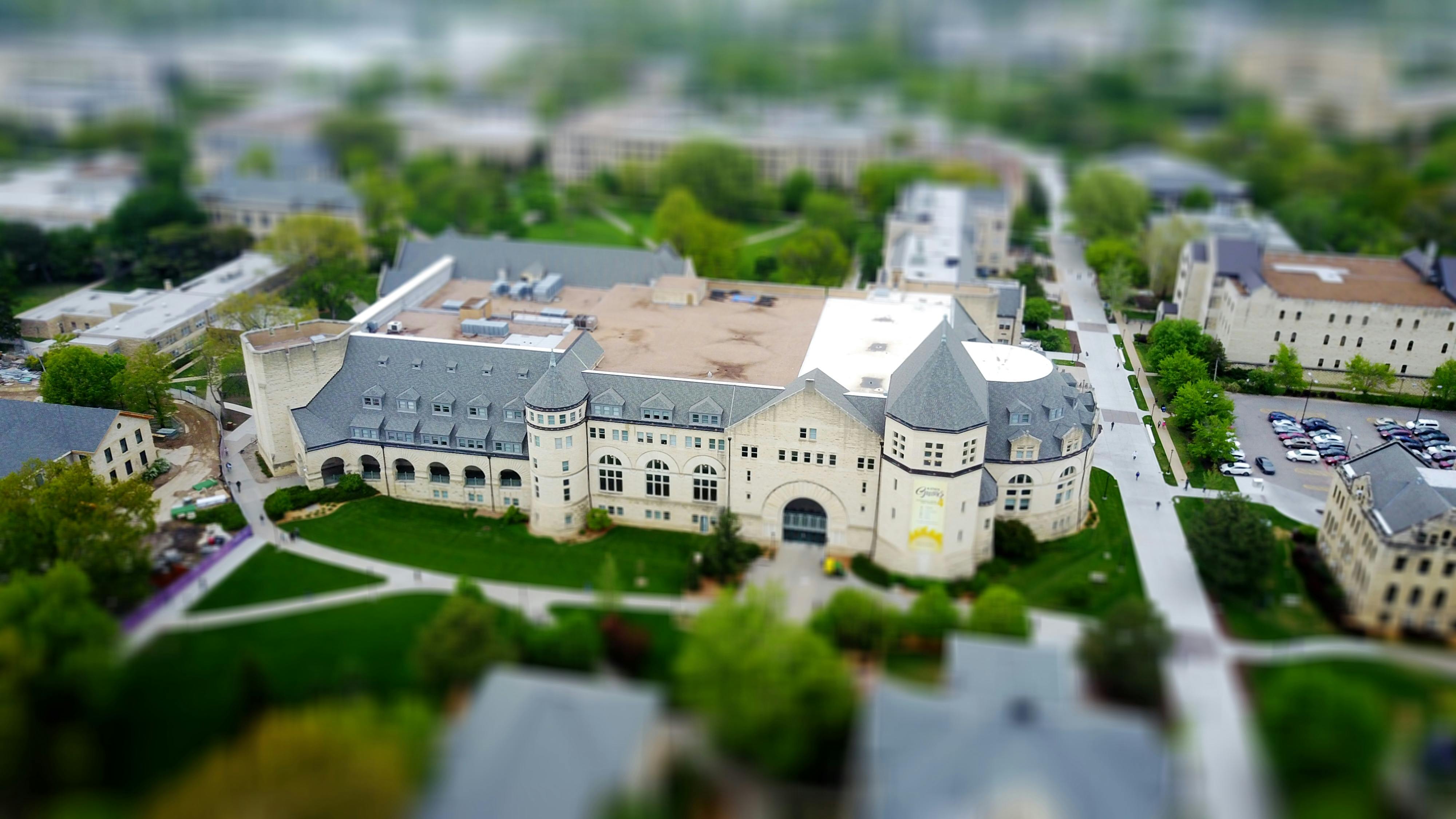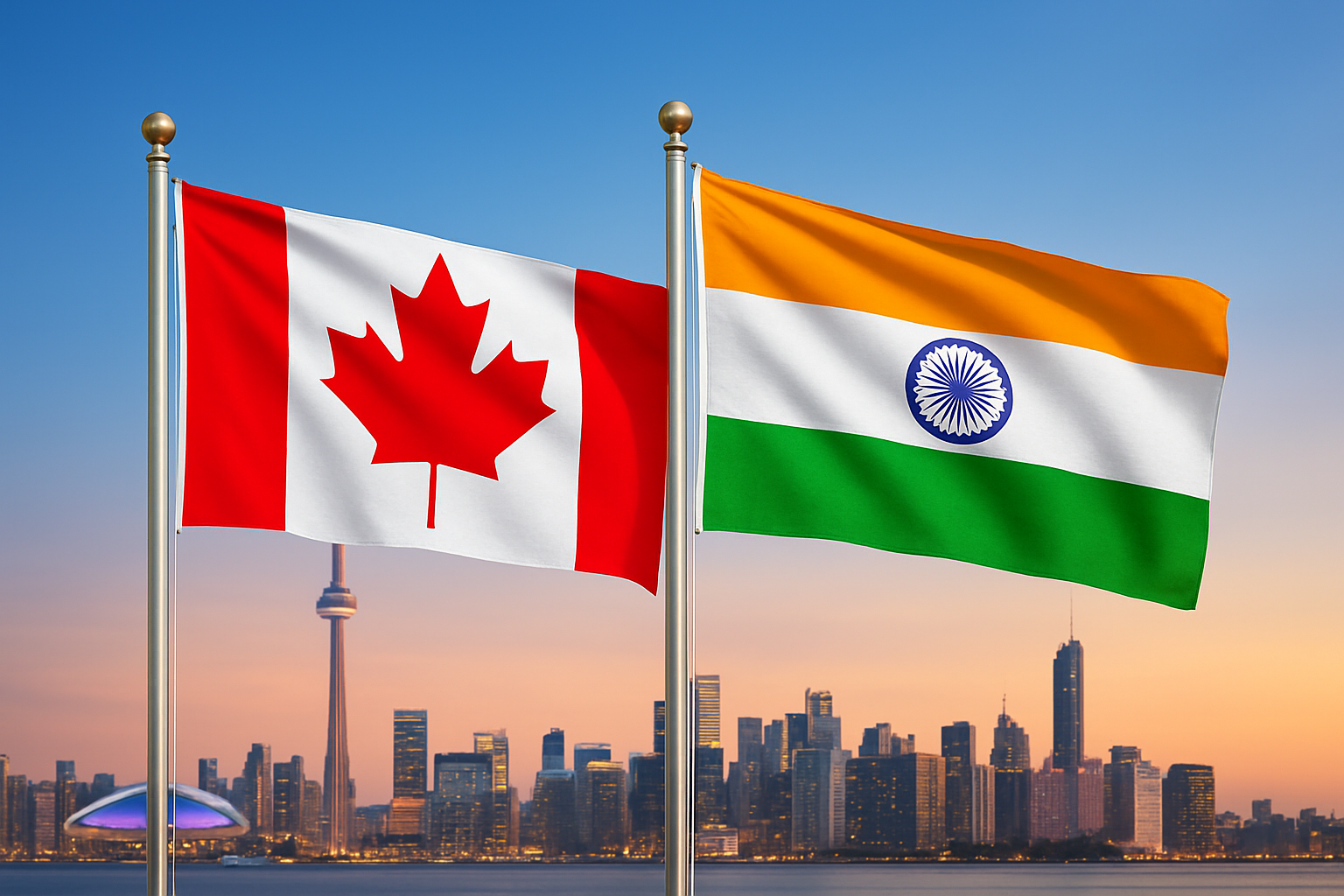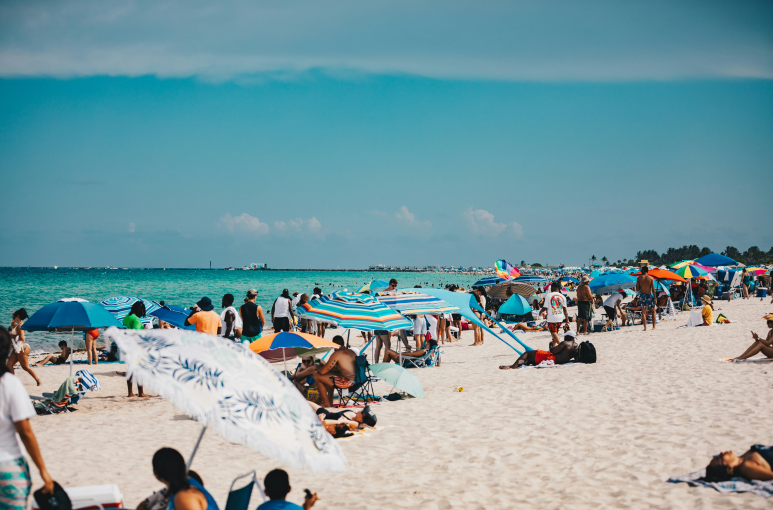Should Indian students go to Canada to study, work, or live? Canada vs India: Which is better? Canada is always one of the most popular study-abroad destinations for Indian students. But before deciding on it, nearly all students may ask themselves, “Is going to Canada better than staying in India?”. To answer this key question, in this paper, we compare a range of aspects of “Canada vs India for living standards, education systems, employment opportunities, and immigration policies, which can significantly affect your study experience and prospects. Have a look at the detailed comparison to help you make an informed choice.
Canada vs India: Living Benefits
The benefits of living in Canada vs India are renowned. Canada is a vibrant city offering higher living standards in terms of safety, healthcare, high-quality education, and a more inclusive culture and study environment for international students. On the other hand, India is also rich in culture, with an array of well-reputed universities, colleges, and educational institutions. For Indian students, the outstanding benefits of living in Canada are safe, convenient, international, and multicultural, while the key benefit of living in India must be affordability and staying closer to familiar cultural surroundings. Here are the more detailed benefits of living in Canada vs India.
Benefits of Living in Canada

For international students, there are a ton of benefits to enjoy a memorable study and life in Canada.
- High-quality education
Canada is home to world-renowned universities and colleges, offering excellent academic courses and research opportunities. Some universities are among the top 30 globally in the QS World University Rankings, allowing students to have better job prospects after graduating.
- Substantial job opportunities
Canada hosts several globally recognized large-scale factories and industrial facilities across multiple sectors, such as TMMC, Volkswagen Battery Plant, and Ford Motor Company, friendly for newcomers. The overall employment rate in Canada was 61.1% in February 2025, offering expansive job opportunities for international students.
- High safety and low crime rates
Canada is one of the safest countries in the world, with low crime rates and a strong emphasis on personal security.
- Quality healthcare system accessible to students
Students benefit from Canada’s public healthcare system, which provides affordable and reliable medical services.
- Multicultural and inclusive society
Canada embraces diversity, allowing students to connect with people from different cultural backgrounds in a welcoming environment.
- Affordable living costs
Compared to other Western countries, Canada offers reasonably priced housing, food, and daily groceries, making student life more manageable and less budget-pressure.
- Stable social and political climate
The country enjoys political stability and social harmony, providing a secure and predictable environment for living and studying.
- Well-developed public transport and infrastructure
Canada’s cities feature efficient public transportation, modern facilities, and smooth connectivity that make commuting easy and convenient.
- Clean, beautiful, and environmentally friendly cities
Canadian cities are known for their clean streets, green spaces, and commitment to environmental sustainability. Plus, landscapes are varied, so there are many must-visit beautiful sites like Niagara Falls, Old Quebec, and Whistler.
- Welcoming immigration policies
Canada offers supportive immigration pathways for international students, including study permits and post-graduation work opportunities.
Benefits of Living in India

Have a look at the benefits of living in India to help you compare and make the right choice.
- Well-Known Academic Institutions and Courses
India is home to some of the most prestigious educational institutions globally. The Indian Institutes of Technology (IITs) and Indian Institutes of Management (IIMs) consistently rank among the top in Asia. In the QS Asia University Rankings 2025, IIT Delhi and IIT Bombay were ranked 44th and 48th, respectively, underscoring their global reputation. These institutions offer a diverse array of courses, particularly in engineering, technology, and management, attracting students from all over the world.
- Lower Cost of Living and Affordability
Living in India is definitely affordable, not just for Indian students, but also for international students. For instance, the average monthly expenses for students range from ₹22,300 to ₹38,700, depending on the city and lifestyle. This affordability allows students to focus more on their studies and extracurricular activities without the financial strain often associated with education abroad.
- Rich Cultural and Social Experiences
India’s cultural tapestry is vibrant and diverse, offering a plethora of festivals and traditions throughout the year. These fantastic festivals enhance students’ social experience. Popular festivals are Krishna Janmashtami on August 16 and Independence Day on August 15, featuring traditional rituals, music, dance, and community gatherings.
- Diverse and Flavorful Cuisine
Foods are more diverse than those in Canada and more unique, allowing students to have an impressive living experience. Diverse cuisine ranges from the spicy chaats of Delhi to the coastal seafood of Kerala, the variety is endless.
- Nature and Climate
India’s diverse geography offers a variety of natural landscapes, well-known as the Himalayan mountains in the north and the coastal beaches in the south. Plus, climate diversity allows students to choose a location that best suits their climate preferences, whether they enjoy the cool hill stations or the tropical warmth of coastal areas.
- Proximity to Family and Familiar Environment
If you are an Indian student, deciding to stay home means staying close to their families and cultural roots. This proximity provides emotional support and a sense of belonging. Additionally, being in a familiar cultural environment helps students navigate daily life with ease and comfort.
Canada vs India: Cost of Living as a Student
Cost of living in Canada vs India plays a crucial role in the “which is better” question, as the budget is always the most important factor to consider. It is clear that Canada offers high living standards but comes with higher costs. India provides an affordable lifestyle but may lack some student-friendly infrastructure, better work opportunities and high salary. So, how different and how much will the cost of living in both countries be? We are dividing the data into two main parts to help students have a clearer comparison: the average rent in Canada vs India, and the daily living expenses in Canada and India. Let’s check.
Average Rent in Canada vs India
| Canada vs India: Average Rent | |||
|---|---|---|---|
| Item (Data sourced from Numbeo) | Canada (CAD/month) | India (₹/month) | Notes |
| student housing/accommodation | C$ 850 to C$ 1,500 per month | ₹5,000 to ₹35,000 | **Rent of student housing in Canada exceeds that in India by 525.6%, but Canadian accommodations include more and higher-quality amenities. |
| private 1-bedroom apartment in city centre | 1,852.84 C$ per month | 14,979.49 ₹ per month | |
| private 1-bedroom apartment outside city centre | 1,617.53 C$ per month | 9,637.25 ₹ per month | |
| private 3-bedroom apartment in city centre | 2,906.37 C$ per month | 34,880.17 ₹ per month | |
| private 3-bedroom apartment outside city centre | 2,536.47 C$ per month | 22,287.63 ₹ per month | |
Living Expenses in Canada vs India
| Canada vs India: Living Expenses | |||
|---|---|---|---|
| Item | Canada (CAD/month) | India (₹/month) | Notes |
| Food & Grocery | C$ 300–500 per month | ₹ 8,000–12,000 per month | 2.4 times higher than India’s |
| Utility costs | CAD 110-400 per month | ₹ 2,000–7,534 per month | 3.2 times higher than India’s |
| Internet & Mobile | CAD 90-228 per month | ₹ 700–1,600 per month | 8.3 times higher than India’s |
| Transportation | CAD 75-156 per month | ₹ 250–18,00 per month | 6.8 times higher than India’s |
| Tuition Fee | CAD 23,000–40,000 per year | ₹ 268,000–634,000 per year | 4.8 times higher than India’s |
| Leisure&personal care&other essentials | CAD 100–200 per month | ₹ 2,000–5,000 per month | 2.6 times higher than India’s |
| Average Monthly Net Salary (After Tax) | 3,969.91 C$ | 45,321.82 ₹ | 5.26 times higher than India’s (1 CAD ≈ 60 INR) |
Canada vs India, the overall cost of living in Canada is significantly higher than in India across almost every category. Still, Canada’s average monthly net salary is about 5.26 times higher than India’s.
- Groceries in Canada cost about 182.4% more.
- Food expenses overall are a staggering 502.67% higher.
- Consumer prices are 194% greater in Canada.
- Dining out at restaurants will cost you about 316.5% more compared to India.
- Healthcare costs show the largest gap, being 28 times higher in Canada.
- Transportation expenses are also 100.23% more.
- Tuition fees in Canada exceed those in India by 143.20%.
Canada vs India: Education System
Both Canada and India have a compulsory education stage from 6 to 14 years, but in Canada, compulsory education extends to 16–18 years, with near-universal coverage. In terms of higher and international education, Canada is a popular study destination, with degrees widely recognised worldwide. Canadian graduates enjoy strong competitiveness in the global job market. By comparison, India’s higher education holds influence in Asia, but its overall global ranking and international recognition are lower than that of Canada’s top universities. If you are considering comparing education systems between Canada and India, find out through the breakdown below.
Education System in Canada
Canada’s education system is known for its high quality, flexibility, and diversity, and is managed independently by each province or territory rather than through a single national system.
- Pre-primary/Kindergarten: basic courses for kids to get interested in studying.
- Elementary/ Primary Education: Grades 1–6, roughly ages 6–12. Courses focus on foundational knowledge and learning skills, covering subjects such as language, mathematics, science, and social studies.
- Intermediate/Junior High/Middle School: Grades 7–12, roughly ages 12–18. Offers a wide range of optional courses, allowing students to choose academic or vocational paths according to their interests and future plans.
In Quebec, the courses are arranged in special groups. High school ends at Grade 11, followed by CEGEP (two-year pre-university or three-year vocational programme). CEGEP acts as a bridge to university or direct employment, providing pre-university preparation or vocational training.
- Post-secondary Education: Universities, colleges, polytechnics, and vocational schools
Includes undergraduate, master’s, doctoral, and professional programmes, emphasising practical skills and internationalised learning. There is an array of prestigious institutions that are great in terms of their academic excellence and rankings. The University of Toronto, McGill University, and the University of British Columbia (UBC) are ranked among the top 50 universities worldwide, according to the QS World University Rankings 2026. In addition to their strong global positions, these universities offer a wide range of programs and opportunities for international students, making Canada a popular destination for higher education.
Education System in India
India’s education system is known for its exam-focused approach and highly competitive academic environment, managed jointly by the central government and state governments, with states having certain autonomy in implementation.
- Pre-school Education: easy foundation courses for early childhood.
- Primary Education: Lower primary is classes 1–5, and courses focus on foundational knowledge and basic skills, covering subjects such as language, mathematics, science, and social studies. Classes 6-8 are upper primary, offering courses on primary skills, logic, and critical thinking.
- Secondary Education: Classes 9/10 and higher Secondary or Polytechnic classes 11 and 12. Students must take national or state-level examinations, which determine progression to higher secondary education. In Higher Secondary Education, students choose between arts, science, or commerce streams, preparing for national or state-level entrance exams for university.
- Higher Education: Universities, colleges, engineering institutes, medical colleges, management schools, etc. This stage includes undergraduate, master’s, doctoral, and professional programmes, with a strong focus on theory and examination results, in a highly competitive environment. Popular universities are IITs, IIMs, the University of Delhi, and Bangalore University, all having a key influence in Asia.
Canada vs India: Top Universities
Canada and India offer top universities, and honestly, the international ranking of the best universities in Canada is typically higher than those in India. We listed these top universities and their ranking is to help students compare the global reputation of their preferred institutions. But the rankings depend on numerous factors, so before you make a final decision, remember to evaluate each factor in a comprehensive way. Generally speaking, Canada hosts internationally recognised universities with modern facilities, while India has elite institutions excelling in technical and management fields.
Top 5 Universities in Canada
| Top 5 Universities in Canada | |
|---|---|
| Top 5 Universities in Canada | QS World University Ranking 2026 |
| McGill University | 27 |
| University of Toronto | 29 |
| University of British Columbia (UBC) | 40 |
| McMaster University | 94 |
| University of Alberta | 94 |
Top 5 Universities in India
| Top 5 Universities in India | |
|---|---|
| 5 best Universities in India | QS World University Ranking 2026 |
| IIT Delhi | 123 |
| IIT Bombay | 129 |
| IIT Madras | 180 |
| IIT Kharagpur | 215 |
| Indian Institute of Science | 219 |
Canada vs India: Employment Opportunities
Canada and India both provide a wide range of job opportunities across various sectors, attracting young professionals to advance their careers. However, if you are comparing countries to advance your career, Canada is the clear choice, considering its work environment, salaries, and prospects for career growth. For international students, work experience during and after studies shapes their career. Canada offers international students the chance to work part-time and provides post-study work options, while India primarily serves local employment markets. We have prepared a listing of the top 5 highest-paying jobs in Canada and India, along with their average annual salaries, in order to help you compare employment opportunities in Canada and India.
Canada
- Anesthesiologist: $311,820
- Orthodontist: $287,491
- Psychiatrist: $284,034
- Software Engineering
- Manager: $139,840
- Petroleum Engineer: $137,107
India
- Commercial Pilot: ₹24–₹48 Lakhs Per Annum
- Management Consultant: ₹20–₹30 Lakhs Per Annum
- Product Manager: ₹15–₹31 Lakhs Per Annum
- Investment Banker: ₹5–₹19 Lakhs Per Annum
- Data Scientist: ₹10–₹20 Lakhs Per Annum
Types of Visa in Canada vs India

Both Canada and India offer student visas primarily for studying, and both require you to show sufficient funds, good health, and a clean record to ensure you can live and study legally. The difference is that Canada’s system is more streamlined, connecting studying, part-time work, post-graduation employment, and even immigration, while India’s student visa mainly focuses on academics, so working or moving permanently requires separate applications. If you have read all comparisons between Canada and India, have you already made the final choice? Before you decide to move to a new country, remember to check the differences in the various types of visas available in both countries.
Canada
- Student Visa: Full-time study,
- part-time work up to 20 hours/week
- Post Graduate Work Permit (PGWP): 1–3 years after graduation
- Permanent Residency: Possible after meeting work and other criteria
India
- Student Visa: Valid for the course duration.
- Limited work rights: International students cannot work freely during their studies.
- Employment after study: Requires a local employment visa or sponsorship.
Last words about Canada vs India, which is better for students?
Choosing between Canada and India depends on your priorities. Canada offers high living standards, internationally recognised education, and post-study work opportunities with potential pathways to permanent residency. India provides affordability, cultural familiarity, and strong academic institutions in engineering, management, and science.
For Indian students seeking global exposure, career growth, and international work experience, Canada may be the better option. For those prioritising lower costs and cultural comfort, India remains a strong choice. Consider your academic goals, budget, and career aspirations before deciding. If you’re considering Canada, explore student housing options and comprehensive guides to help you plan your study life efficiently before moving to a new environment.
FAQ
Which is better to live in, India or Canada?
Both India and Canada have their advantages. India offers a rich cultural heritage, diverse lifestyles, and affordable living. Canada, on the other hand, is known for its higher quality of life, safety, clean environment, and better infrastructure. If you prioritise affordability, India is a good choice. However, if modern facilities and stability are more important to you, Canada is a better option for living.
Canada vs India economy, which country is richer?
In terms of total GDP, India has a GDP of $2.7T, ranked the 7th largest economy in the world, while Canada is $1.7T, ranked 10th. India is larger because of its massive population. So Canada has a much higher GDP per capita, meaning the average Canadian is wealthier than the average Indian, which ranked 21st vs 150th.
Canada vs India for area: Is Canada bigger than India?
Yes. Canada is the second-largest country in the world by land area, while India ranks seventh. Canada’s area is about three times larger than India’s.
What are the monthly expenses in Canada?
On average, monthly expenses for a single person in Canada (excluding rent) range from CAD $1,200–$1,800. Rent varies widely depending on the city, with student accommodations or shared housing starting at CAD $500–$1,200 per month.
Is India a good place to live?
Whether India is a “good” place to live is a subjective question, depending on personal choices and preferences. India has a vibrant culture, family connections, an affordable lifestyle, and opportunities in fast-growing industries. However, challenges such as pollution, infrastructure, and population density may affect the living experience.
Canada vs India for population, is Canada larger than India?
No. India has a population of over 1.4 billion, making it the most populous country in the world. Canada’s population is only about 40 million, so India is much larger in population.
Canada vs India: Who is more powerful?
Both countries have influence in different ways. India is a growing global power with a strong military and a large economy. Canada is influential in diplomacy, education, and global peacekeeping. Military-wise, India is more powerful, but Canada offers more stability and higher living standards.
India or Canada, which is better from the perspective of international students?
For international students, Canada is often the preferred choice because of its high-quality education system, post-study work opportunities, safe environment, and welcoming immigration policies.
Is Canada good for Indians?
Yes. Canada is one of the top destinations for Indians, with a large Indian community, a strong job market, and favourable immigration policies.
What are the primary differences between Canada and India?
The differences between Canada and India vary from factors including geography, economy, lifestyle, healthcare and education.
- Geography: Canada is much larger with a colder climate, while India is diverse with tropical to alpine regions.
- Economy: Canada has a higher GDP per capita, while India has a massive labour force and growing industries.
- Lifestyle: Canada offers a modern, structured lifestyle; India provides cultural vibrancy and affordability.
- Healthcare & Education: Canada has publicly funded systems, while India’s are mixed public-private.
How is life in Canada for Indians?
Life in Canada for Indians is generally positive. There are vibrant Indian communities, Indian restaurants, temples, and cultural associations. Most Indians find it easy to adapt, though the colder climate and higher living costs can be challenging.
What opportunities are there for Indian students in Canada?
Indian students in Canada benefit from:
- World-class universities and colleges.
- Post-graduation work permits (PGWP).
- Opportunities to settle through immigration programs.
- Access to diverse part-time and full-time job markets.
How much is a good salary in Canada?
A “good” salary in Canada depends on location and lifestyle. Generally, CAD $60,000–$80,000 per year is considered comfortable for a single person, while families may need more.
Why is Canada better than India for study?
Canada is usually considered a better destination than India if you want to receive higher education. Canada offers globally recognised degrees, modern facilities, multicultural campuses, and immigration-friendly policies, allowing students to work and settle after graduation.
What are the employment opportunities in Canada?
Canada has strong job markets in IT, engineering, healthcare, finance, skilled trades, and business. International graduates can also access jobs through post-study work permits and pathways to permanent residency.







